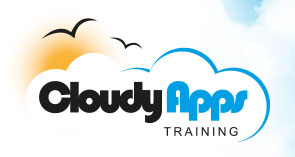


Course CLD105 - Building Cloud Computing Applications Using Amazon Web Services (AWS)
Duration: 5 Days
Course Background
Amazon Web Services Cloud Computing Framework was developed by Amazon in order to leverage its vast global computing infrastructure by providing cloud computing services to its customers. It is a sophisticated and well established framework with a large user base.
Course Prerequisites and Target Audience
This 5 day course aims to teach attendees the concepts and techniques necessary to develop cloud solution applications based on Amazon Web Services. It covers
- Data storage and persistence using Amazon S3, RDS and SimpleDB
- Elastic Compute Cloud (EC2) configuration and customization
- Deploying and hosting of Web applications using AWS Elastic Beanstalk and Amazon CloudFormation
- Data protection and security via use of the Amazon Virtual Private Cloud
Course Outline
- Cloud computing - an intensive overview of the key concepts and technologies
- Introduction to Amazon cloud
- Creating accounts
- Cost breakdown analysis
- Service Level Agreement (SLA) Evaluation
- Console command line tools and the command line API
- Amazon Cloud - Computing Architecture Overview
- EC2
- S3
- EBS
- Beanstalk
- RDS
- VPC
- CloudFront
- MapReduce
- SQS
- CloudWatch
- Getting started with Amazon Cloud
- Setting Up Your Environment
- Choosing Geographic Location, Regions, and Availability Zones
- Choosing an Architecture
- Creating a Rails Server on EC2
- RDS Database
- S3/CloudFront
- Making Backups of Volumes
- Scaling applications - with S3, ELB, Auto Scaling, and RDS
- S3 and File Uploads
- Elastic Load Balancing
- Auto Scaling
- Scaling a Relational Database
- Elastic Beanstalk
- Data storage
- Persisting off-instance storage with EBS volumes
- Creating backups with snapshots
- Long term durable storage with Simple Storage Service (S3)
- Using Buckets to organise information
- Handling the transmission of large data volumes into or out of the Amazon cloud
- Using SimpleDB for high-availability access to nonrelational data with SimpleDB
- Working with relational databases using the Relational Database Service (RDS)s
- Scaling applications
- Decoupling applications using Simple Queue Service (SQS)
- High performance content delivery using Edge cacheing and CloudFront
- Delivery of static and streaming content
- Monitoring, Management, Performance and Configuration
- Managing Downtime, Improving Uptime and Managing the Decoupled System
- Key issues
- Measurement
- Downtime minimisation strategies
- Customising virtual machines
- Modifying existing images
- Creating new images by cloning running instances
- Importing and exporting existing virtual machines
- Persisting an AMI to S3
- Sharing images
- Use case scenarios for cloud setup
- Monitoring - both from inside the cloud and from outside
- CloudWatch and Visualisation of utilisation metrics
- Setting alarms to send and receive notifications
- Accessing AWS via the AWS API
- Scaling and load balancing
- Understanding Elastic load balancing - and distribution of incoming traffic
- Dynamically adding and removing instances with Auto Scaling
- Specifying capacity thresholds
- Application Hosting - Using Elastic Beanstalk
- Platform as a Service (PaaS) concept
- Deploying applications in an AWS cloud
- Launching and selecting an application environment
- Configuring and customising platform stacks
- CloudFormation and the provisioning of application resources
- Security
- Setting up account security
- Access credentials
- MultiFactor authentication
- Identity Access Management (IAM)
- Virtual Private Clouds (VPCs)
- Provisioning isolated AWS resources
- Bridging EC2 instances to an internal network with a VPN
- Multitenancy issues and how to avoid them
- Launching an EC2 instance on a dedicated hardware platform